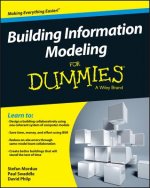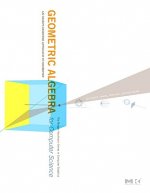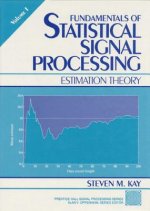
Code: 04866448
Factorization Method for Inverse Problems
by Andreas Kirsch, Natalia Grinberg
The factorization method is a relatively new method for solving certain types of inverse scattering problems and problems in tomography. Aimed at students and researchers in Applied Mathematics, Physics and Engineering, this text ... more
- Language:
 English
English - Binding: Hardback
- Number of pages: 216
Publisher: Oxford University Press, 2007
- More about this

You might also like
-

Johannes Cocceius and the Exegetical Roots of Federal Theology
105.44 € -

National Gallery
70.26 € -

Read Thai in 10 Days
29.65 € -

Fading Scars
16.05 € -1 % -

Thoth Tarot, Astrology, & Other Selected Writings
25.56 € -2 % -

Factors of Soil Formation
182.67 € -

When the Beat Was Born
15.74 € -23 % -

Kimi ni Todoke: From Me to You, Vol. 25
8.07 € -29 % -

Learn to Play the Bass with Metallica
17.79 € -17 % -

Alterations of Chemical Equilibrium in the Nervous System
122.83 € -

Almost Complex Homogeneous Spaces And Their Submanifolds
100.33 € -

Best Of Times, The Worst Of Times, The: Maritime Security In The Asia-pacific
79.26 € -

Economic Policy
51.75 € -

Organic Syntheses Collective V 9
346.83 € -

Beauty Shop Politics
30.88 € -9 % -

Police Corruption: Essential Readings
374.25 € -10 % -

Colonial Inscriptions
29.65 € -9 % -

Diary
16.25 € -4 % -

Philosophy in a Feminist Voice
60.03 € -

Avalonia's Book of Chakras
16.05 € -1 % -

National Geographic Kids Readers: Dolphins
6.13 € -4 %
Give this book as a present today
- Order book and choose Gift Order.
- We will send you book gift voucher at once. You can give it out to anyone.
- Book will be send to donee, nothing more to care about.
More about Factorization Method for Inverse Problems
You get 381 loyalty points
 Book synopsis
Book synopsis
The factorization method is a relatively new method for solving certain types of inverse scattering problems and problems in tomography. Aimed at students and researchers in Applied Mathematics, Physics and Engineering, this text introduces the reader to this promising approach for solving important classes of inverse problems. The wide applicability of this method is discussed by choosing typical examples, such as inverse scattering problems for the scalar Helmholtz equation, a scattering problem for Maxwell's equation, and a problem in impedance and optical tomography. The last section of the book compares the Factorization Method to established sampling methods (the Linear Sampling Method, the Singular Source Method, and the Probe Method).
 Book details
Book details
Book category Books in English Mathematics & science Mathematics Applied mathematics
153.82 €
- Full title: Factorization Method for Inverse Problems
- Author: Andreas Kirsch, Natalia Grinberg
- Language:
 English
English - Binding: Hardback
- Number of pages: 216
- EAN: 9780199213535
- ISBN: 0199213534
- ID: 04866448
- Publisher: Oxford University Press
- Weight: 467 g
- Dimensions: 240 × 160 × 21 mm
- Date of publishing: 13. December 2007
Trending among others
-

Financial Modelling in Commodity Markets
68.42 € -

Principles and Techniques of Applied Mathematics
17.17 € -19 % -

Understanding Markov Chains
51.44 € -

Mathematical Modelling Techniques
14 € -19 % -

Grundkurs Theoretische Physik 2
36.30 € -4 % -

Advanced Engineering Mathematics 10e ISV WIE
73.84 € -4 % -

Chaos
14.41 € -23 % -

Complexity: A Very Short Introduction
9.40 € -28 % -

Mathematical Theory of Communication
25.87 € -8 % -

Chaos: A Very Short Introduction
9.40 € -28 % -

Applied Mathematics: A Very Short Introduction
12.57 € -10 % -

Mathematics of Financial Derivatives
86.32 € -

Virtual Barrels
67.09 € -

Quantum Mechanics and Quantum Field Theory
104.32 € -

A First Guide to Computational Modelling in Physics
30.57 € -2 % -

String Theory and Particle Physics
79.77 € -

Advanced Calculus
86.73 € -

Multiple Criteria Decision-Making Methods
191.16 € -

Lecture Notes On Mathematical Olympiad Courses: For Junior Section - Volume 1
29.65 € -

Lecture Notes On Mathematical Olympiad Courses: For Junior Section - Volume 2
29.65 € -

Networks: A Very Short Introduction
10.22 € -28 % -

TRIZ For Dummies
24.95 € -29 % -

Differential Forms with Applications to the Physical Sciences
14.41 € -20 % -

Cryptography: A Very Short Introduction
10.22 € -28 % -

Concepts of Mathematical Modeling
19.32 € -31 % -

Mathematical Physics
87.65 € -2 % -

Building Information Modeling For Dummies
29.35 € -18 % -

Essential PTC (R) Mathcad Prime (R) 3.0
87.14 € -

Handbook of Applied Cryptography
205.78 € -

Introduction to Deep Learning
57.88 € -

Mathematics for Computer Graphics
68.42 € -

Mathematics for Finance
39.68 € -

Mastering Financial Modeling: A Professional's Guide to Building Financial Models in Excel
86.83 € -

Introduction to the Theory of Complex Systems
86.01 € -4 % -

Matrix Computations
75.17 € -4 % -

Predictive Analytics For Dummies, 2e
23.21 € -25 % -

Regression Modeling Strategies
131.83 € -

Ramsey Theory, Second Edition
100.53 € -

Geometric Algebra for Computer Science (Revised Edition)
96.03 € -

Fundamentals of Statistical Processing, Volume I
131.53 € -

Dynamical Systems with Applications using Python
70.36 € -4 % -

Computational Physics
89.80 € -

Synchronization
120.48 € -

Mathematical Physiology, 2 Vols.
113.83 € -

Student Solutions Manual for Nonlinear Dynamics and Chaos, 2nd edition
25.25 € -2 % -

Networks
81.41 € -

Programming the Finite Element Method 5e
142.47 € -

Brownian Motion and Stochastic Calculus
73.33 € -

Handbook of Induction Heating
195.56 €
Collection points Bratislava a 2642 dalších
Copyright ©2008-24 najlacnejsie-knihy.sk All rights reservedPrivacyCookies



 15549 collection points
15549 collection points Delivery 2.99 €
Delivery 2.99 € 02/210 210 99 (8-15.30h)
02/210 210 99 (8-15.30h)